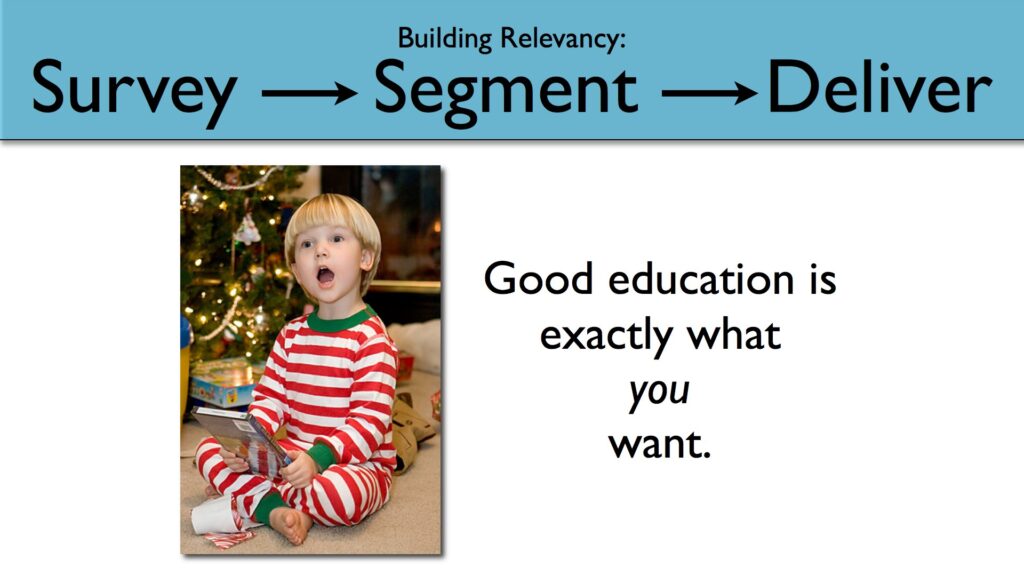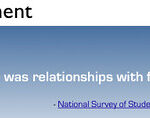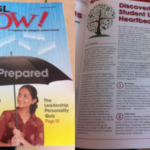After realizing the headline made all the difference in click through on my own RSS reader, I decided to spice up my own headlines. How’d I do?
Left a post about this on Kevin Guidry’s Mistaken Goal and wanted to back up to some thinking and follow up with some visuals.
We spend so much time making pretty slides for presentations and they just lay around in between our travels. So I wanted to share. A couple of visuals does wonders for a conversation.
(Side Note: we dedicated ourselves along time ago to using Creative Commons copyright with our materials. Philosophically, we think it is silly to try to own/ protect education. So we will be releasing our slides and images as we have time to put them up. Of course this means some people will download our slides and try to do the presentations themselves and not hire us. That’s okay. We want to change the world, not own it.)
(Plus, just for fun, we’ve randomly included a few really cryptic slides so that anyone who tries to give the presentation will have to admit in front of the audience they don’t know what the hell that one means. C’mon, that’s funny. We’ve all been there.)
Here was the comment:
We’ve found it helps the conversation to start with a distinction between content and channel.
Content is good or not, based on quality, freshness, and most importantly for education, relevancy.
Technology is providing new channels, Social Networking, Text Msg, e-mail, RSS feed, etc. Many of the schools we talk to confuse the content with the channel – and want to shove the same poor, not targeted / irrelevant, content down the new channel, thinking the channel makes the difference. (They think, as you mentioned, that the new channel is the panacea, and this results, as Tom said, in channel burnout, where students cut off the school.)
Students tell us all the time they don’t read the school’s e-mail, because “most of it is junk.” (Sad, isn’t it, that many students see their schools as spammers?)
There’s another layer of technology needed around the content, to improve it’s speed and relevancy. This will reduce the friction in any channel, and maybe then we can get into intrinsic benefits of one channel over another for different types of information.
The current excitement and focus around the new channel(s) misses the real issue.
Relevancy, btw, is the ultimate meeting them where they are at. I think this is step one. I would love to hear how your thoughts changed on this aspect of the conversation.
We start the conversation here:

I know that this simple pic might be controversial. Many immediately go to the parental mindset of education and think “Hey wait, education isn’t all fun and games, we know best, that’s why we educate.”
There is a time where students should learn what society wants them to learn (i.e. the basics) regardless of whether or not they can see the value themselves. I’m talking about later high school/college, and there, I believe, it’s all about engagement. About the same time students are capable of using their pre-frontals (even inconsistently) to see long term value, they become very adept at tuning things out. If the students are engaged the educational process is efficient (fast and fun) if the students are disengaged, the process is a waste of everyone’s time and money. (This is not new thinking, it’s just in the context of technology, The Big Picture school, among others, is following the same thread.)
So here’s the “hop”:
Engagement = Education
and
Relevancy = Engagement
Therefore Relevancy = Education. It’s all nicely circular, just like good philosophy.
Much of this is documented in broad strokes: Astin, Wulff, NSSE, et. al. It’s just easier to work within clear statements, rather than qualified academic speak.
We are interested in the practice, so we have to get clear. (Even if this means cutting off some of the ragged academic edges, as long as we know what we are cutting off.)
With the practice, there are three steps to building relevancy: Survey, Segment, and Deliver. Surveying, as the comment alluded to, is the first step to getting good content. The institution needs to know, individual by individual, what is relevant to them.

These are the fast free / lower cost e-mail survey tools. A place to start. To go further than aggregate data, to deliver relevancy, they need to be tied in to be either a) imported into a central database or b) contact info distributed to topic leaders who will communicate with their interested parties directly.
(Side note: Banner / Sun Gard tries to deliver relevancy via a “customizable” portal, but the channels are filtered by role (i.e. professor, student) not be individual, so they are missing big opportunities. The group feature set sounds good in theory but is clunky beyond workable and consistently gets destroyed by Facebook Groups. Student leaders use what works, they know.)
First:

and then:

Giving the institution and the school:

Allowing the school to group, or segment:

Then and only then, does the discussion of how to deliver the relevant content come into play. That’s when we can talk about channels and the various merits, or drawbacks of each:

*Note: the chart on the left is taken from Chris Anderson’s book, The Long Tail.




